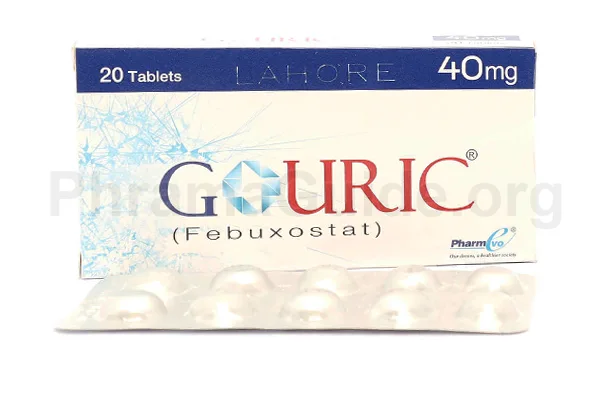Gouric is a medication used to treat gout by lowering uric acid levels in the body. Gouric is likely a safe medication but it can have some common, and less common side effects. Here are some common and less common side effects associated with Gouric.
Common Side Effects
- Nausea: Some individuals might experience feelings of queasiness or an upset stomach while taking Gouric.
- Joint Pain: A temporary increase in gout flares or joint pain might occur when starting Gouric.
- Rash or Itching: Skin reactions like rash or itching might occur in some cases.
- Liver Function Changes: Mild changes in liver function tests have been reported in some individuals taking Gouric.
- Headache: Mild to moderate headaches can be a common side effect of Gouric.
- Abnormal Liver Function Tests: In some cases, there might be elevated liver enzymes detected through blood tests.
- Diarrhea: Some individuals might experience changes in bowel habits, such as diarrhea.
Less Common Side Effects
- Severe Skin Reactions: While rare, severe skin reactions like Stevens-Johnson syndrome or toxic epidermal necrolysis can occur. These are serious conditions that require immediate medical attention.
- Liver Problems: In rare cases, more severe liver problems beyond mild changes in liver function tests have been reported. Symptoms might include yellowing of the skin or eyes (jaundice), dark urine, or abdominal pain.
- Cardiovascular Events: There have been reports, albeit uncommon, of cardiovascular events such as heart attacks or strokes associated with the use of Gouric.
- Allergic Reactions: Some individuals might experience allergic reactions that manifest as hives, swelling of the face or throat, difficulty breathing, or severe dizziness.
- Muscle Pain or Weakness: Rarely, Gouric might cause muscle-related problems like pain, weakness, or muscle breakdown (rhabdomyolysis).

What is Gouric?
Gouric is one of the leading brands of Febuxostat, manufactured and marketed by Pharmevo (Pvt) Ltd, Pakistan.
Gouric : Available Formulations and Strengths
Presently, Gouric is available in Tablets Form.
Gouric Tablets : 40mg and 80mg strengths.
What Are The Possible Drug Interactions of Gouric?
- Azathioprine or Mercaptopurine: These medications, often used in organ transplant patients or for certain autoimmune conditions, can have increased toxicity when used alongside Gouric. Monitoring and potential dosage adjustments may be necessary.
- Theophylline: Gouric might decrease the elimination of theophylline from the body, potentially increasing its levels and the risk of side effects.
- Didanosine (DDI): When Gouric and didanosine are taken together, Gouric might reduce the effectiveness of didanosine. Administering them separately for at least 2 hours is recommended.
- Certain Antacids: Some antacids containing aluminum or magnesium hydroxide might reduce the absorption of Gouric, affecting its effectiveness. Administering Gouric at least 2 hours before or after antacids is advised.
- Drugs Metabolized by CYP1A2: Gouric might affect the metabolism of drugs metabolized by the enzyme CYP1A2, potentially altering their levels in the body. Medications like theophylline, caffeine, or clozapine fall into this category.
- Warfarin and Other Blood Thinners: Gouric might affect the metabolism of blood thinners like warfarin, possibly altering their anticoagulant effects. Close monitoring of blood clotting parameters might be necessary if these medications are used together.

Leave A Comment